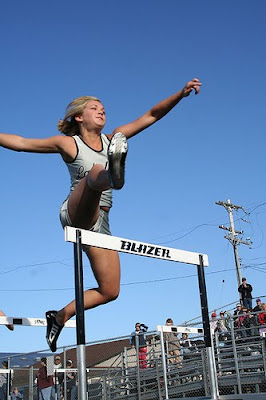
I originally thought I'd go for all flowers this month. You know, the old, April showers bring May flowers sort of thing. But although May did bring on lots of beautiful blooms (it seems like everything is a couple weeks early this year), it was good for more than just that. May brings Teacher Appreciation week, and our wonderful PTO went all out this year, including decorating the front walk with "thank you" in dozens of different languages -- perfect for our school. May brought the new/old cabinet for the kitchen (and hopefully June will bring the time for the floor, walls, and new appliances!!). COFF donated $1000 to CFR, and my Champion ran the Race for the Cure in celebration of me. My "Time With Teacher" in the raffle at our school's Carnapalooza was a river exploration program at Highbanks. My young friend and I didn't catch the water snake, but we were suitably impressed by it. Worthington has their flower baskets hung from all the light poles in Old Worthington. These baskets are a measure of my summer: right now the vines only come to the bottom of the baskets. By the middle of August, they will be touching the ground and it will be time to go back to school! We finish the month with The Hosta Guy's dog under the van at the farmer's market, the spices I used for chicken curry, and Captain Flint (our favorite barista at Stauf's) in "Treasure Island."














